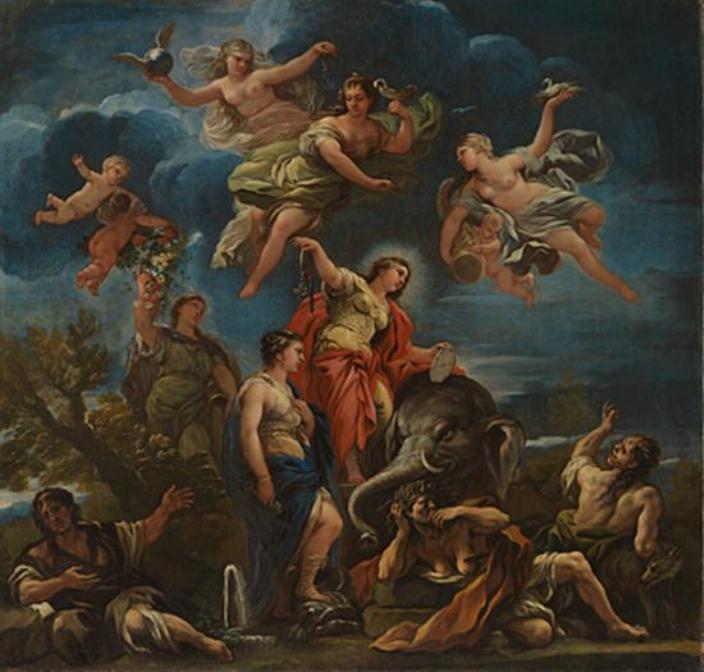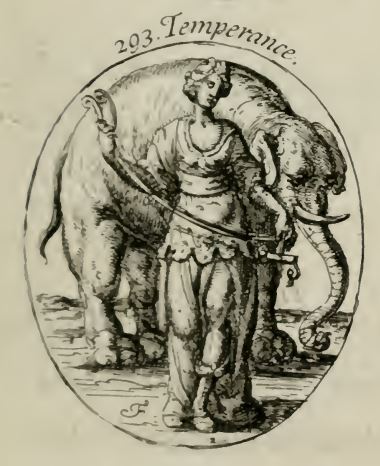Every student of western symbolism should familiarize himself with Iconologia by Cesare Ripa. In the simplest terms, Iconologia can be described as a dictionary of allegorical images. The fist edition was published in 1593 in Perugia. You can find some general info on the Wikipedia page dedicated to Cesare Ripa.
The use of allegorical images combined with text, makes Iconologia similar to emblem books or emblemata. Iconologia is actually listed among the emblem books in this Wikipedia page. Emblem books like Atalanta Fugiens by Michael Maier are hard to decipher due to the alchemical imagery and alchemical lingo. In contrast, Iconologia provides a clear explanation of each allegorical image.
Iconologia is also useful if you want to understand the art of a few Baroque painters. The Wikipedia page dedicated to Cesare Ripa mentions a few artists influenced by Iconologia. Unfortunately, the page fails to mention Luca Giordano and Laurent de La Hyre, two of my favorite painters. Luca Giordano used imagery from Iconologia in his allegorical paintings that depict the cardinal virtues (temperance, justice, courage, prudence). Laurent de La Hyre used imagery from a French edition of Iconologia (probably the edition of Jean Baudoin) in his allegorical paintings of the seven liberal arts.
A dedicated student of symbolism may want to know how the allegorical images in Iconologia were derived. From my studies, it seems that the images are based on information from classical books and classical mythology. “History of Animals” by Aristotle is probably the source behind many images that use animal symbolism. “Hieroglyphica” by Horapollo is probably another source of animal symbolism. Classical mythology is the source for images that use pagan gods. Other probable sources are the Bible, Aesop’s fables, Natural History by Pliny the Elder, Etymologies by Isidore of Seville and medieval bestiaries.
Allegory of Temperance by Luca Giordano

I think that it would be useful to go over an example of an artist that uses imagery from Iconologia. The painting “Allegory of Temperance” by Luca Giordano incorporates many allegorical images in one painting. You can see a higher resolution version here (you can also zoom in).
We don’t want to do a detailed analysis, since the painting has many allegorical figures that require an explanation. However, we may want to understand the central figure that represents temperance. Why is Temperance holding a bridle and a clock? Why is Temperance leaning on an elephant?

The following description of temperance is from an English edition of Iconologia :”A Gentlewoman holding a Bridle in one Hand, and a Stay of a Clock in the other ; an Elephant by her” . The text continues with an explanation of the symbolism “The Bridle and Stay denote the Business of Temperance to bridle and moderate the Appetite and inordinate Fassions , as time serves. The Elephant, because if it has once been accustom’d to a certain Quantity of Meat, it never exceeds, but keeps strictly to that, and will eat no more.”
I don’t know the source of the belief regarding the diet of the elephant. Nonetheless, Iconologia can be useful to understand some of these obscure allegorical associations. I will let the readers try to identify the other allegorical figures.
Finally, I want to add that different editions of Iconologia usually don’t cover the same allegorical concepts. For example, the English edition by Pierce Tempest doesn’t have grammar listed, while the French edition by Jean Baudoin discusses grammar. Also, some Italian editions have a more in depth explanation of many allegorical figures (including quotes from classical authors). See this link for various versions of Iconologia. Also see this Italian page for a complete list of 374 images.

1 comment